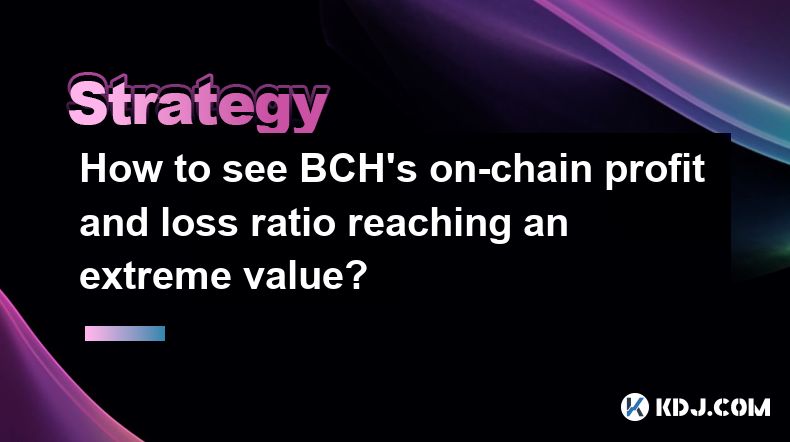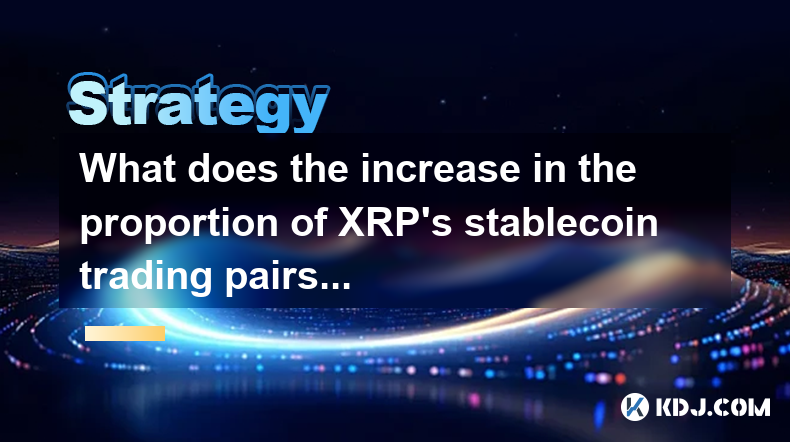-
 Bitcoin
Bitcoin $93,186.7808
5.67% -
 Ethereum
Ethereum $1,790.8332
13.12% -
 Tether USDt
Tether USDt $1.0003
0.02% -
 XRP
XRP $2.2275
6.78% -
 BNB
BNB $615.2576
2.56% -
 Solana
Solana $149.4751
7.43% -
 USDC
USDC $0.9999
-0.01% -
 Dogecoin
Dogecoin $0.1818
12.68% -
 Cardano
Cardano $0.6921
10.63% -
 TRON
TRON $0.2475
0.57% -
 Chainlink
Chainlink $14.3998
9.70% -
 Avalanche
Avalanche $22.4621
12.88% -
 Sui
Sui $2.8002
25.37% -
 UNUS SED LEO
UNUS SED LEO $9.0584
-0.74% -
 Stellar
Stellar $0.2674
7.75% -
 Shiba Inu
Shiba Inu $0.0...01377
10.75% -
 Toncoin
Toncoin $3.1325
7.14% -
 Hedera
Hedera $0.1821
6.81% -
 Bitcoin Cash
Bitcoin Cash $357.0499
3.45% -
 Polkadot
Polkadot $4.0875
8.94% -
 Litecoin
Litecoin $84.5855
7.26% -
 Hyperliquid
Hyperliquid $19.0943
2.65% -
 Bitget Token
Bitget Token $4.6448
4.17% -
 Dai
Dai $0.9998
-0.01% -
 Ethena USDe
Ethena USDe $0.9994
0.02% -
 Pi
Pi $0.6524
3.07% -
 Monero
Monero $225.3741
4.74% -
 Pepe
Pepe $0.0...09153
14.40% -
 Uniswap
Uniswap $5.9461
12.68% -
 Aptos
Aptos $5.2797
8.51%
What proportion of LINK's callback in the bull market is an entry opportunity?
During LINK's bull market callbacks, a 20-30% drop from recent highs, high volume, and positive sentiment can signal good entry points, but always manage risk with diversification and stop-loss orders.
Apr 23, 2025 at 11:07 am

The question of what proportion of LINK's callback in the bull market represents an entry opportunity is complex and depends on various factors including market sentiment, historical price movements, and individual risk tolerance. In this article, we will delve into the specifics of LINK's behavior during bull markets, analyze past data, and provide insights on how to identify potential entry points during callbacks.
Understanding LINK and Bull Markets
LINK, the native token of the Chainlink network, is known for its volatility, which can be both a boon and a bane for traders. A bull market is characterized by a sustained increase in asset prices, often accompanied by widespread optimism and increased trading volume. During such periods, LINK can experience significant price surges, but it is also prone to sharp corrections or callbacks.
Historical Performance of LINK in Bull Markets
Analyzing LINK's performance during past bull markets can provide valuable insights. For instance, during the 2020-2021 bull run, LINK saw its price increase from around $2 in March 2020 to a peak of over $50 in May 2021. However, this ascent was not linear; it included several significant callbacks. One notable callback occurred in September 2020, when LINK dropped from around $20 to $12, a 40% decline. This pullback was followed by another rally, pushing the price to new highs.
Identifying Entry Opportunities During Callbacks
To determine the proportion of a callback that represents a good entry opportunity, traders often look at several factors:
- Percentage Drop: A common rule of thumb is to look for a pullback of 20-30% from recent highs. This level often represents a balance between a significant correction and a potential for further downside.
- Volume and Market Sentiment: High trading volume during a callback can indicate strong interest and potential for a rebound. Additionally, positive news or developments within the Chainlink ecosystem can signal a good entry point.
- Technical Indicators: Tools like the Relative Strength Index (RSI) and Moving Averages can help identify oversold conditions or support levels where the price might rebound.
Case Study: LINK's 2020 Callback
Let's examine a specific case to illustrate how to identify entry opportunities. In September 2020, LINK experienced a sharp callback from $20 to $12, a 40% drop. This callback occurred over a period of about two weeks. Here's how a trader might have approached this situation:
- Monitor the Drop: As LINK approached a 30% drop from its recent high, a trader might have started to consider an entry.
- Check Volume and Sentiment: If the volume remained high and there were no significant negative news, this could be a sign of a healthy correction rather than a trend reversal.
- Use Technical Indicators: If the RSI indicated that LINK was in an oversold condition (typically below 30), this could further confirm the potential for a rebound.
Practical Steps for Entering During a Callback
For those looking to capitalize on LINK's callbacks in a bull market, here are detailed steps to follow:
- Monitor Price Action: Keep a close eye on LINK's price, especially during a bull market. Use tools like price alerts to stay informed of significant movements.
- Assess the Drop: When LINK experiences a pullback, calculate the percentage drop from the recent high. If it reaches the 20-30% range, consider it a potential entry point.
- Analyze Volume and Sentiment: Check trading volume and read market sentiment through forums, social media, and news outlets. High volume and positive sentiment can indicate a good entry opportunity.
- Use Technical Analysis: Employ technical indicators such as RSI, Moving Averages, and support levels to confirm the potential for a rebound.
- Set Entry and Stop-Loss Orders: Once you decide to enter, place an entry order at your desired price level. Additionally, set a stop-loss order to manage risk, typically below a recent support level.
Risk Management and Diversification
While identifying entry opportunities during callbacks is crucial, it's equally important to manage risk. Diversification across different cryptocurrencies and asset classes can help mitigate the impact of a wrong entry. Additionally, never invest more than you can afford to lose, and consider using stop-loss orders to limit potential losses.
Frequently Asked Questions
Q: How can I tell if a callback is just a correction or the start of a bear market?
A: Distinguishing between a correction and the start of a bear market can be challenging. Look for signs such as sustained high volume during the callback, positive news or developments, and the behavior of other cryptocurrencies. If the broader market remains bullish and LINK's fundamentals are strong, it's more likely to be a correction.
Q: What technical indicators are most effective for identifying LINK's entry points during callbacks?
A: While no single indicator is foolproof, the RSI is particularly useful for identifying oversold conditions. Moving Averages can help identify support levels, and the MACD can provide insights into momentum. Combining these indicators can increase the accuracy of your entry points.
Q: How often do LINK's callbacks in bull markets present good entry opportunities?
A: The frequency of good entry opportunities during LINK's callbacks depends on the overall market conditions and LINK's specific performance. Historically, LINK has experienced several significant callbacks during bull markets, with many of these presenting good entry opportunities if approached with the right analysis and risk management.
Q: Can I use the same strategy for other cryptocurrencies during bull market callbacks?
A: While the principles of identifying entry opportunities during callbacks can be applied to other cryptocurrencies, each asset has its own unique characteristics and volatility. It's essential to conduct thorough research and adjust your strategy based on the specific behavior and market conditions of the cryptocurrency in question.
Disclaimer:info@kdj.com
The information provided is not trading advice. kdj.com does not assume any responsibility for any investments made based on the information provided in this article. Cryptocurrencies are highly volatile and it is highly recommended that you invest with caution after thorough research!
If you believe that the content used on this website infringes your copyright, please contact us immediately (info@kdj.com) and we will delete it promptly.
- Bitcoin Breaks Through $90,00 as Trump Says He Has 'No Intention' of Firing Fed Chair Jerome Powell
- 2025-04-23 12:35:12
- Musk: Not quitting DOGE, just reducing time allocation
- 2025-04-23 12:35:12
- US Securities and Exchange Commission charges man who allegedly created crypto scheme that swindled 90,000 people out of $200M
- 2025-04-23 12:30:12
- Bitcoin Breaks Above $89,000 to Hit Its Highest Price Since Early March
- 2025-04-23 12:30:12
- US President Donald Trump’s media conglomerate, Trump Media and Technology Group, has signed an agreement with crypto exchange Crypto.com
- 2025-04-23 12:25:12
- The DPDP Act - An Overview:
- 2025-04-23 12:25:12
Related knowledge

Where can I find the current average holding cost of XRP in the market?
Apr 22,2025 at 11:00pm
Where can I find the current average holding cost of XRP in the market? Finding the current average holding cost of XRP in the market can be a challenging task, as this information is not readily available on most mainstream cryptocurrency platforms. However, there are several methods and resources that you can use to estimate this figure. In this artic...

Where is the short-term holding cost line of BCH?
Apr 23,2025 at 06:00am
The short-term holding cost line of Bitcoin Cash (BCH) is a crucial metric for traders and investors looking to understand the immediate market sentiment and potential price movements. This line represents the average cost at which BCH has been held for a short period, typically considered to be less than 30 days. By analyzing this metric, market partic...

Is BCH's UTXO age distribution useful for judging buying and selling points?
Apr 23,2025 at 02:07am
The concept of UTXO (Unspent Transaction Output) age distribution in Bitcoin Cash (BCH) can be a valuable tool for analyzing market trends and potentially identifying buying and selling points. UTXO age distribution refers to the age of unspent outputs in the blockchain, which can provide insights into the behavior of different types of investors and th...

Can BCH's PSAR indicator chase the rise when it turns from empty to long?
Apr 22,2025 at 10:35pm
The Parabolic Stop and Reverse (PSAR) indicator is a popular tool among traders in the cryptocurrency market, including those trading Bitcoin Cash (BCH). The PSAR indicator is designed to identify potential reversals in the price trend of an asset. When the PSAR indicator turns from empty to long, it suggests a potential bullish trend, prompting traders...

How to see BCH's on-chain profit and loss ratio reaching an extreme value?
Apr 23,2025 at 08:35am
Introduction to BCH On-Chain Profit and Loss RatioBitcoin Cash (BCH), a fork of Bitcoin, has its own ecosystem with a significant on-chain activity. One of the critical metrics to assess the health and sentiment of BCH is the on-chain profit and loss ratio. This ratio helps investors and analysts understand whether the majority of BCH holders are in pro...

What does the increase in the proportion of XRP's stablecoin trading pairs indicate?
Apr 23,2025 at 02:00am
The increase in the proportion of XRP's stablecoin trading pairs indicates a significant shift in the trading dynamics of XRP on cryptocurrency exchanges. This trend suggests several important factors at play within the XRP ecosystem and the broader crypto market. Let's delve deeper into what this increase signifies. Higher Liquidity and Trading VolumeT...

Where can I find the current average holding cost of XRP in the market?
Apr 22,2025 at 11:00pm
Where can I find the current average holding cost of XRP in the market? Finding the current average holding cost of XRP in the market can be a challenging task, as this information is not readily available on most mainstream cryptocurrency platforms. However, there are several methods and resources that you can use to estimate this figure. In this artic...

Where is the short-term holding cost line of BCH?
Apr 23,2025 at 06:00am
The short-term holding cost line of Bitcoin Cash (BCH) is a crucial metric for traders and investors looking to understand the immediate market sentiment and potential price movements. This line represents the average cost at which BCH has been held for a short period, typically considered to be less than 30 days. By analyzing this metric, market partic...

Is BCH's UTXO age distribution useful for judging buying and selling points?
Apr 23,2025 at 02:07am
The concept of UTXO (Unspent Transaction Output) age distribution in Bitcoin Cash (BCH) can be a valuable tool for analyzing market trends and potentially identifying buying and selling points. UTXO age distribution refers to the age of unspent outputs in the blockchain, which can provide insights into the behavior of different types of investors and th...

Can BCH's PSAR indicator chase the rise when it turns from empty to long?
Apr 22,2025 at 10:35pm
The Parabolic Stop and Reverse (PSAR) indicator is a popular tool among traders in the cryptocurrency market, including those trading Bitcoin Cash (BCH). The PSAR indicator is designed to identify potential reversals in the price trend of an asset. When the PSAR indicator turns from empty to long, it suggests a potential bullish trend, prompting traders...

How to see BCH's on-chain profit and loss ratio reaching an extreme value?
Apr 23,2025 at 08:35am
Introduction to BCH On-Chain Profit and Loss RatioBitcoin Cash (BCH), a fork of Bitcoin, has its own ecosystem with a significant on-chain activity. One of the critical metrics to assess the health and sentiment of BCH is the on-chain profit and loss ratio. This ratio helps investors and analysts understand whether the majority of BCH holders are in pro...

What does the increase in the proportion of XRP's stablecoin trading pairs indicate?
Apr 23,2025 at 02:00am
The increase in the proportion of XRP's stablecoin trading pairs indicates a significant shift in the trading dynamics of XRP on cryptocurrency exchanges. This trend suggests several important factors at play within the XRP ecosystem and the broader crypto market. Let's delve deeper into what this increase signifies. Higher Liquidity and Trading VolumeT...
See all articles























































































